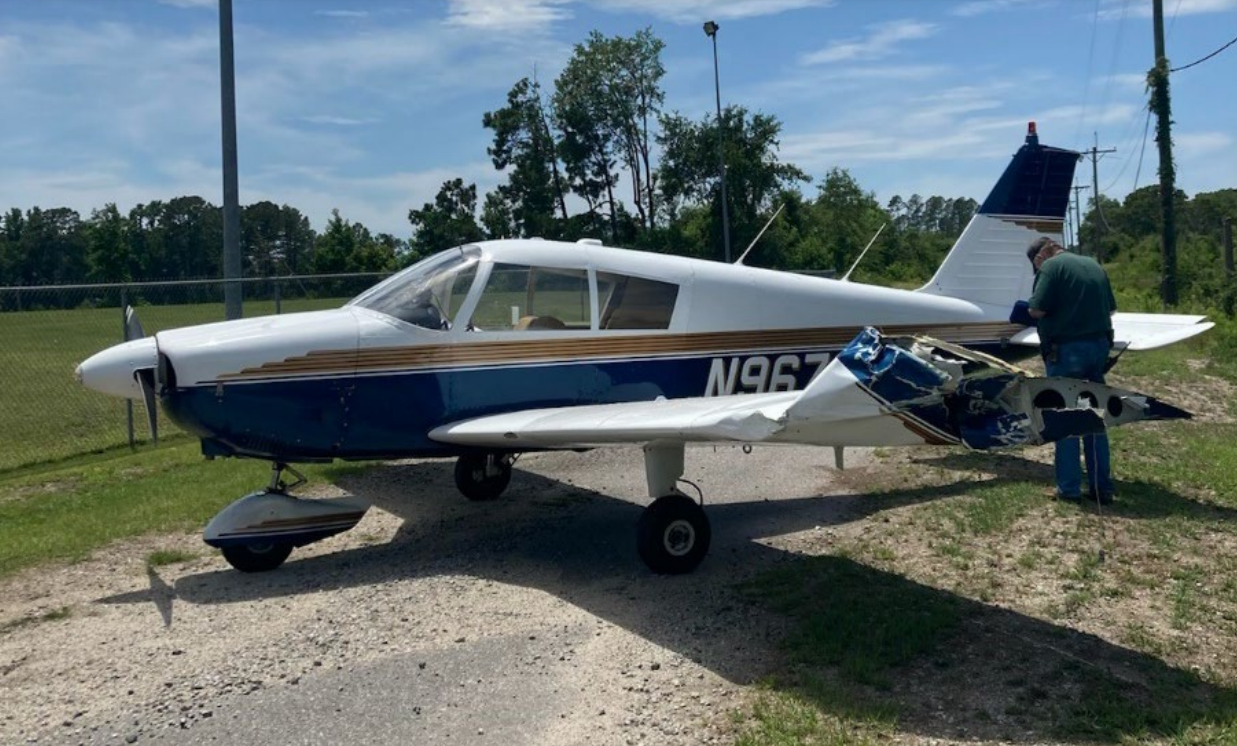
ASN Wikibase Occurrence # 347811
This information is added by users of ASN. Neither ASN nor the Flight Safety Foundation are responsible for the completeness or correctness of this information.
If you feel this information is incomplete or incorrect, you can submit corrected information.
| Date: | Monday 20 June 2022 |
| Time: | 13:15 |
| Type: |  Piper PA-28-180 Cherokee |
| Owner/operator: | Private |
| Registration: | N9676J |
| MSN: | 28-3846 |
| Year of manufacture: | 1967 |
| Fatalities: | Fatalities: 0 / Occupants: 1 |
| Aircraft damage: | Substantial |
| Category: | Accident |
| Location: | near Laurinburg, NC -
 United States of America United States of America
|
| Phase: | Approach |
| Nature: | Private |
| Departure airport: | Sanford-Raleigh Executive Jetport, NC (KTTA) |
| Maxton Airport, NC (MXE/KMEB) | |
| Investigating agency: | NTSB |
| Confidence Rating: |
On June 20, 2022, about 1315 eastern daylight time, a Piper PA-28-180 airplane, N9676J, was substantially damaged when it was involved in an accident near Laurinburg, North Carolina. The private pilot was not injured. The airplane was operated as a Title 14 Code of Federal Regulations Part 91 personal flight.
The pilot reported that he conducted a long cross-country flight and landed with 10 gallons of fuel between the two wing fuel tanks. He subsequently departed without refueling and about 15 to 20 miles from his destination, the engine began to sputter. The pilot switched the fuel selector to the left tank, which momentarily resolved the partial loss of engine power, but the engine again sputtered when the airplane was about 3 miles from the destination. The pilot switched the fuel selector back to the right tank, after which the engine lost total power. He determined that the airplane had insufficient altitude to reach the runway, so he completed a forced landing on a road, during which the airplane struck an object, resulting in substantial damage to the left wing.
The right fuel tank was found nearly empty, and the tank was intact with no areas of fuel leakage observed. The left tank contained less than 1/2 gallon of fuel; however, a fuel leak was observed at the wing root as a result of impact-related damage, and the fuel was measured several days after the accident. Therefore, the exact quantity of fuel that remained in the left wing tank at the time of the accident could not be determined.
Postaccident testing of the engine found that it produced normal power after fuel was added to the right tank. Although the investigation could not determine the total fuel remaining in the left tank due to damage sustained in the accident, it is likely that the pilot exhausted the airplane’s total fuel supply during the approach to landing. The pilot reported that he should have refueled before departing on the accident flight and that he was “over trustful” of the fuel gauges.
Probable Cause: The pilot’s decision to depart with insufficient fuel onboard, which resulted in a total loss of engine power due to fuel exhaustion on final approach for landing.
Accident investigation:
 |
|
Sources:
NTSB
https://data.ntsb.gov/Docket?ProjectID=105300
Location
Images:

Photo: NTSB
Revision history:
| Date/time | Contributor | Updates |
|---|---|---|
| 12-Nov-2023 19:53 | Captain Adam | Added |
Corrections or additions? ... Edit this accident description
The Aviation Safety Network is an exclusive service provided by:


 ©2024 Flight Safety Foundation
©2024 Flight Safety Foundation